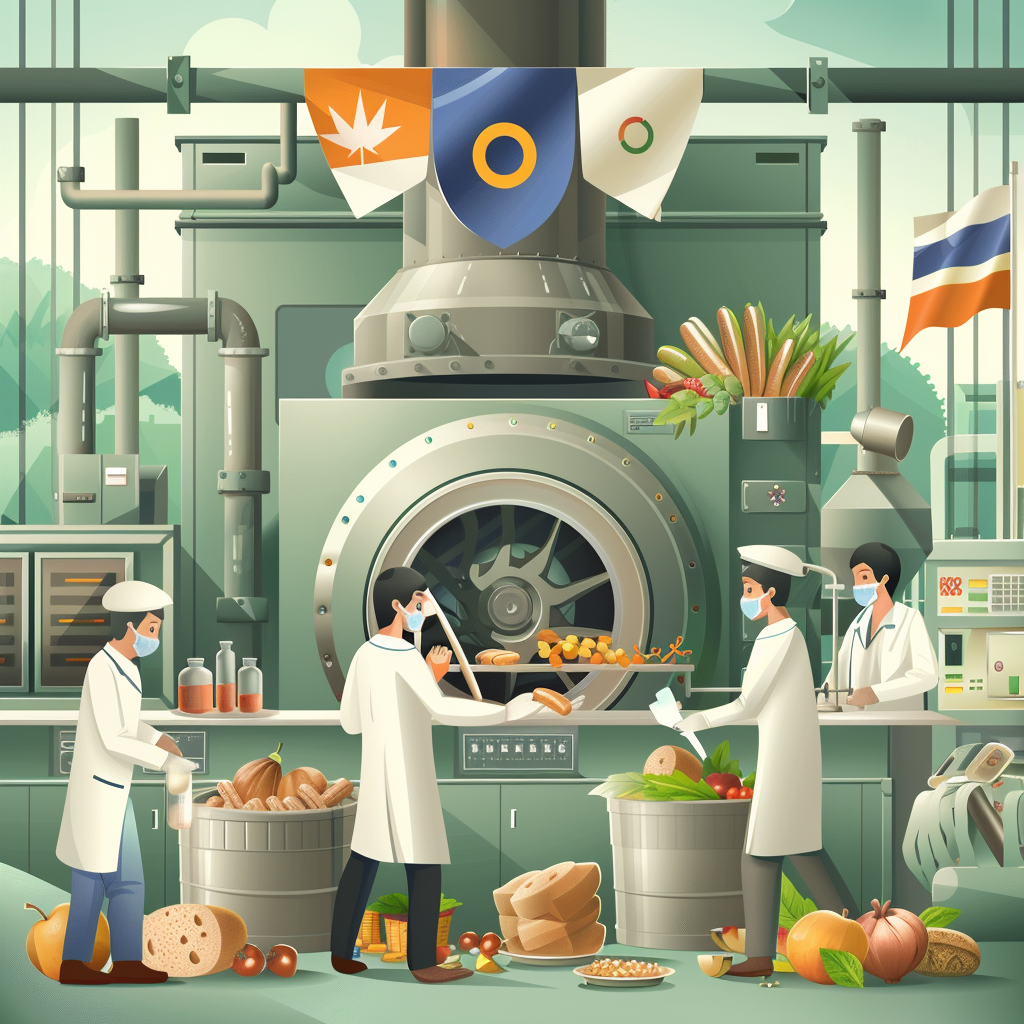Imagine a world where yesterday’s uneaten sandwich, the remnants of your morning fruit salad, and the never-ending heaps of vegetable scraps could become the fuel of tomorrow. Under the innovative guidance of Dr. Trairat Muangthong-on, a visionary team from KMUTT is turning this dream into a reality, one biochar briquette at a time. Introducing the so-called “biochar,” a substance that’s like charcoal but far cooler because it’s eco-friendly and made without a drop of petroleum.
Dr. Trairat and his team embarked on a culinary salvage operation within the university’s bounds, scavenging for the rejects of the food world – bread, veggies, and fruit peels. Their method of choice for this green alchemy? Pyrolysis, using a fixed-bed tube reactor. If that sounds like science fiction, it’s not far off. Pyrolysis is the process of chemically decomposing organic materials through the application of heat, in the cozy confines of an oxygen-free environment. Imagine cooking, but without the risk of burning your toast.
The result of their culinary wizardry? A high-carbon content solid fuel, reminiscent of low-grade coal but with a significantly lower environmental footprint. This biochar isn’t just a testament to sustainable practices; it’s a beacon of hope for industries seeking to reduce their reliance on costly fuels. “Consider it the caviar of eco-fuels,” Dr. Trairat might say, with the potential to significantly reduce the financial and environmental costs associated with conventional fuel sources.
But the dream doesn’t stop at fuel. The team envisions a future where their biochar technique is the talk of the town among government agencies and private firms alike, all in the name of sustainability. The Energy Ministry, the Interior Ministry, and the Pollution Control Department could all embrace this pioneering method to wield the double-edged sword of managing food waste and slashing fuel costs.
The urgency of their mission is underscored by some staggering statistics: according to the UN Environment Programme, the world saw over 931 million tonnes of food waste in 2019 alone. Closer to home, Thailand contributed 9.68 million tonnes to this growing mountain in 2022. But Dr. Trairat’s team is not deterred. In fact, they’re already plotting their next move, aiming to expand their biochar production to other food waste goldmines, including the remnants of sugar production and animal feed factories.
This tale of innovation and environmental stewardship is more than just an academic exercise; it’s a call to arms. With food waste reaching critical levels globally, the work of Dr. Trairat and his team serves as a lighthouse, guiding us towards a more sustainable and cost-effective future. So, the next time you’re about to discard that banana peel or toss out that half-eaten loaf of bread, remember: in the right hands, your trash could be the treasure that fuels the future.


















This biochar initiative is simply incredible! We need more visionary projects like this to address our planet’s waste problem. Kudos to Dr. Trairat and his team.
While it sounds great on paper, the scalability of such projects is always an issue. How much food waste do we need to make a significant impact?
Scalability is indeed crucial, but remember, every big solution starts small. Gathering support and improving technology will make it viable.
Exactly, @GreenTechie. And considering the staggering amount of food waste we generate, there’s plenty of ‘fuel’ for this biochar innovation.
This is just brilliant! Transforming waste into energy without harming the planet. I hope this sparks more eco-friendly innovations.
Let’s not get ahead of ourselves. How cost-effective is this technique compared to existing energy sources? We can’t ditch conventional fuels if the alternative costs twice as much.
That’s a valid point. The economic angle of sustainable solutions is often their Achilles’ heel. We need more data on the costs involved.
But consider the environmental cost of conventional fuels. Biochar might be more expensive now, but it has the potential to save us in environmental repair costs later.
Imagine if every city implemented this. We could seriously reduce landfill waste! Dr. Trairat’s team is onto something big here.
Urban areas would benefit immensely. Though, it’s important to develop infrastructure to collect and transport food waste efficiently to make this viable.
I can already see the hurdles in waste collection and sorting. How do we ensure the food waste is clean and suitable for biochar production?
Those are legitimate concerns. It seems part of making this work involves educating people on properly sorting their waste. No small task, but necessary.
As a scientist, I find the method fascinating, especially the use of pyrolysis. But I’m curious about the by-products of this process. Are there any environmental risks associated with them?
Good question. Pyrolysis can produce bio-oil and synthetic gas as by-products, which could be used or treated as hazardous depending on their composition. More research is needed to assess these outputs fully.
This is a game-changer! It’s not every day that you hear about turning your uneaten sandwich into fuel. This could make people think twice about wasting food.
Does anyone know if there’s a patent on this biochar production technique? I’m wondering about the potential for other researchers or companies to develop similar technologies.